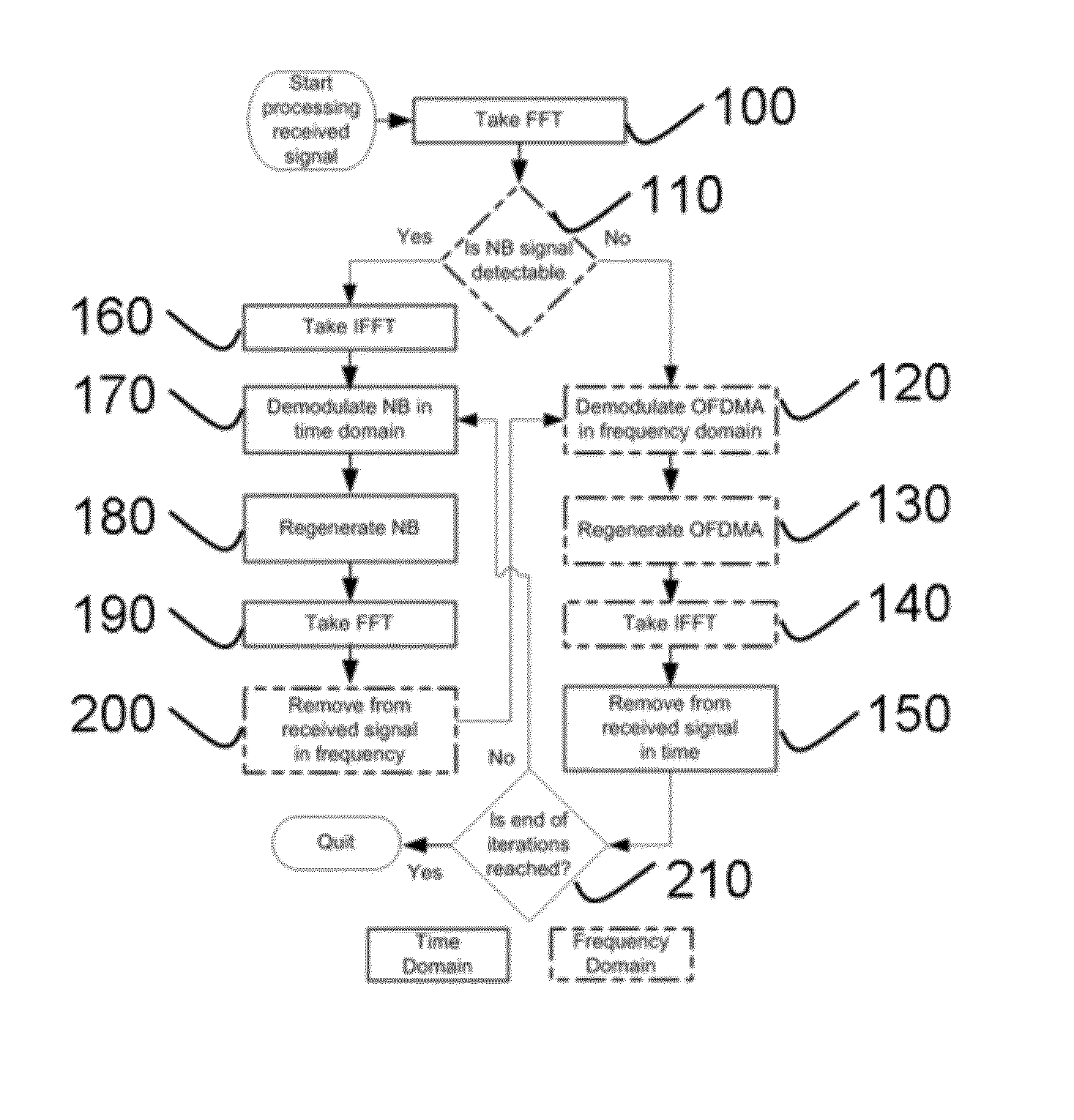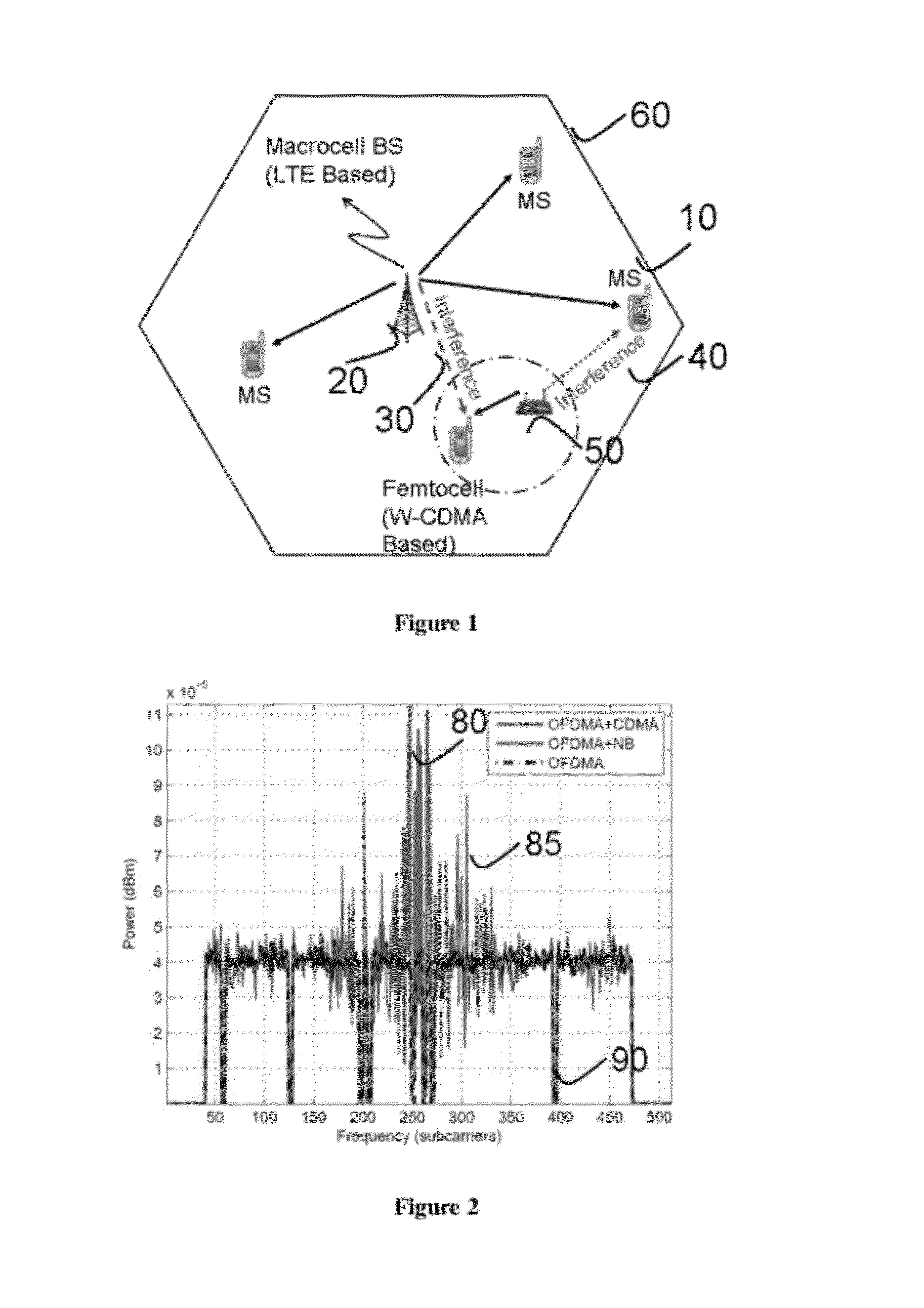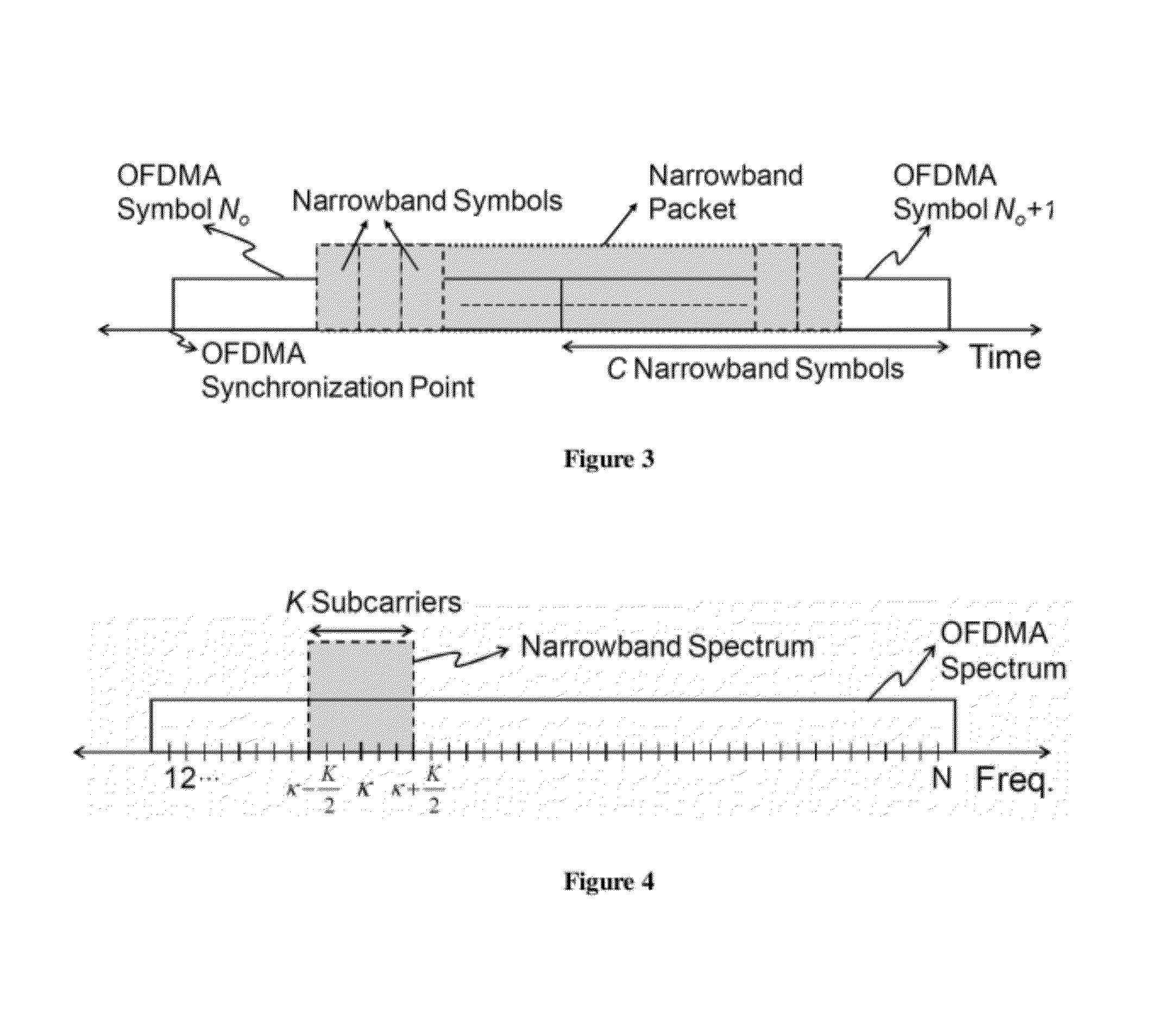Method for iterative interference cancellation for co-channel multi-carrier and narrowband systems
a narrowband and multi-carrier technology, applied in the field of wireless communication, can solve the problems of spectrum not being efficiently utilized, zhang's method is limited in practice, and the performance degradation of both systems, so as to improve the performance of the initial signal separation and the effect of improving the performan
- Summary
- Abstract
- Description
- Claims
- Application Information
AI Technical Summary
Benefits of technology
Problems solved by technology
Method used
Image
Examples
Embodiment Construction
[0026]The present invention is illustrated herein by a system having both a macrocell network and one or more femtocell networks, and the multicarrier system (e.g., the macrocell network) uses an orthogonal frequency division multiple access (OFDMA)-based PHY layer. In this detailed description, all participants are assumed to have transceiver functionalities. The primary receiver with the capability to cancel narrowband interference according to a method of the present invention is an OFDMA receiver (i.e., a receiver in which time and frequency synchronization to the OFDMA signal is ensured). FIG. 3 and FIG. 4, show the NB and OFDMA signals in time and frequency domains. Synchronizing to the OFDMA symbols rather than NB symbols is preferable even if the start and end times of a targeted packet of NB symbols do not coincide with the boundaries of the OFDMA symbols.
[0027]FIG. 5 is a block diagram illustrating a cancellation algorithm that can be applied at the primary receiver to can...
PUM
 Login to View More
Login to View More Abstract
Description
Claims
Application Information
 Login to View More
Login to View More - R&D
- Intellectual Property
- Life Sciences
- Materials
- Tech Scout
- Unparalleled Data Quality
- Higher Quality Content
- 60% Fewer Hallucinations
Browse by: Latest US Patents, China's latest patents, Technical Efficacy Thesaurus, Application Domain, Technology Topic, Popular Technical Reports.
© 2025 PatSnap. All rights reserved.Legal|Privacy policy|Modern Slavery Act Transparency Statement|Sitemap|About US| Contact US: help@patsnap.com



